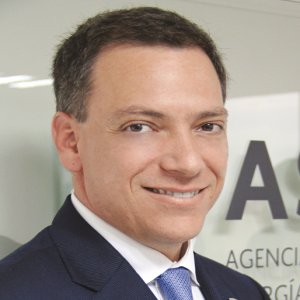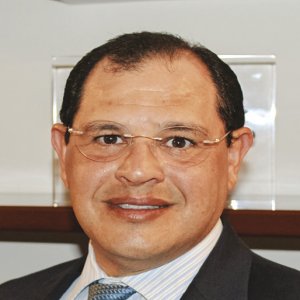Bridging the Gap Between North and South

STORY INLINE POST
Q: What advancements have been made on the implementation of the ZEE?
A: Since the approval of the ZEE Law in May 2016, technical studies have been made by the ZEE Authority and approved by an Inter-Ministerial Commission for the first five ZEEs: Puerto Chiapas in Chiapas; Coatzacoalcos in Veracruz; Lazaro Cardenas - La Union in Michoacan and Guerrero; Salina Cruz in Oaxaca; and Progreso in Yucatan.
The project has three different stages that were also approved by the Inter-Ministerial Commission. The first stage, which includes the declaration of the first three ZEE: Lazaro Cardenas-La Union, Puerto Chiapas and Coatzacoalcos, was announced at the end of September 2017. Zones in this first stage have different objectives. For instance, Lazaro Cardenas is the entry point for the Asia-Pacific region and serves as an entry point for the automotive and aerospace clusters in the center of the country; it is one of the most important ports in Mexico and it has impressive potential. In Coatzacoalcos, the chemical and petrochemical sectors will help the city become one of the most successful clusters in the country. It has the advantage of being a few hours away from the center of Mexico and is also part of the southern corridor of the country that connects with Salina Cruz. Last, we envision Puerto Chiapas as a strategic entry point for Central America where a world class commercial cluster can be developed.
For the second stage of the project, we will include Salina Cruz, in Oaxaca, and Progreso, in Yucatan. Salina Cruz is a commercial and oil-related port that operates as a regional logistics center and, alongside Coatzacoalcos, it is the most competitive intermodal economic node in the southeast of the country. Progreso will host a ZEE specialized in IT and R&D sectors, taking advantage of the stock of highskilled human capital and a business environment focused on innovation and technology development.
Later, Tabasco and Campeche will host ZEE that will benefit from the installed capacity and knowledge of the energy sector to establish world-class clusters.
Q: What are the steps that companies must follow to participate in the Mexican ZEEs?
A: Companies can participate through different investment opportunities. Before the ZEEs start operating, companies can participate as ZEE developers or operators, or as partners of a ZEE developer or operator. Once the ZEE starts operating, companies can invest inside the ZEE, as anchor companies or suppliers, developing new business lines across the value chain. There will also be investment opportunities outside the ZEE, in the Areas of Influence, which are nearby localities that will benefit from the ZEE economic spillovers, where companies can develop infrastructure and provide support services such as housing and education.
ZEEs will be established in polygons that will permit two types of sections, depending on land ownership. On one hand, federal land owned by the government will be licensed to a ZEE developer or operator, which will be granted a permit through a public tender. We are looking for ZEE developers or operators with world experience that can associate with local companies and develop supply chains. However, we also want these developers/operators to have a comprehensive regional vision to develop friendly environments suitable for both working and living, and not only for the development of industrial parks. On the other hand, ZEE sections will be developed on private land, where licensing will be granted to develop sector-specific clusters.
For the moment, we are working with the Ministry of Finance and Public to craft the guidelines for granting permits for ZEE developers and authorizations for investors inside the ZEE, which will be published before 2017 ends.
Q: Is there any plan in place to ensure that new businesses generate added value and go beyond mere manufacturing schemes? A: Mexican ZEE will be developed in the poorest regions of the country where a series of structural barriers hinder growth and economic development. For instance, deficient infrastructure, low-skilled human capital and high levels of informality in the labor market are barriers that limit the region’s potential. As a result, manufacturing represents one out of 10 workers in the south, whereas the north more than doubles this proportion.
What ZEEs look for is to change this disparity while benefiting from the competitive advantages of each region. There are zones that will attract investment in the automotive and aerospace industries, others in petrochemical, others in agroindustry and others in IT and R&D activities. This will create, in the medium to long term, a more diversified economic structure in the southeast of Mexico that will increase the industrial base and contribute to closing development gaps that currently exist.
Q: How can continuity of the ZEE project be ensured once the current presidential administration ends?
A: Since the design of the project, the Mexican government has seen the ZEE as a project that transcends political time frames and ideologies.
For instance, we have a Federal Law for Special Economic Zones that was approved by all political parties and we have coordination laws for ZEE in the states that will host them, which are tied to the federal vision. We also have letters of intent from municipalities, endorsed by local congresses, in which they ask to host a ZEE and we will also have coordination agreements endorsed by states’ congresses, in which we will work with transparency on security, incentives, regulation, simplification, support and financing of projects in the ZEE.
In the Declaratory Decree the President signed for the first three ZEEs, it established fiscal incentives for 15 years as acquired rights for investors, nearly double the eight granted by law. Other incentives, such as VAT exemptions and a special customs regime will last for the duration of the permit and authorization, which can be granted for 40 years and is renewable for a similar period. In sum, there is a solid legal framework in the country to establish ZEEs as long-term projects and to provide legal certainty to the companies that invest in them.
Q: What was the key focus when adapting this model from other international experiences?
A: Since the design and planning stages, the federal government knew it had to learn from the success and failure of similar cases elsewhere. We asked the World Bank, the leading institution regarding ZEEs, to guide and enrich the process, and the Interamerican Development Bank to provide its experience with human capital and urban development across Latin America.
These institutions have helped us design the Mexican ZEE Law according to best international practices. This included not only the legal framework and governance model of the ZEE project, but also the main factors that maximize the probability of success for a ZEE. Additionally, they helped the Mexican government choose the best locations for the first round of ZEEs, based on technical criteria such as access to infrastructure, land ownership and use, among others.
They will continue to provide their experience in the next steps of implementation: the development program of each ZEE, the tender process to grant a ZEE developer or operator the permit to develop and operate the first section on federal land, and the technical advice to the ZEE authority for guidance on granting permits and authorizations to developers, operators and investors.
Q: For the first three ZEEs, a total investment of US$5.3 billion and the creation of 12,000 jobs is expected. What is the total expected investment for the entire region encompassing the ZEEs?
A: A crucial aspect of the implementation of ZEE is the attraction of investments that will help develop each zone and its area of influence, or the adjacent municipalities. The Feasibility Technical Reports executed for each of the first three zones declared present estimates based on the identified potential of each zone and their competitive advantages, estimating investments of US$31.4 billion over 2030 years, creating over 211,073 jobs during the same period.
Based on prospective promotional activities, there has been contact with over 150 enterprises that have shown interest in the zones. Specifically, there are over 50 companies that have presented this interest in a letter of intent to the ZEE authority, 32 of which correspond to the first three zones declared by the president. Such letters represent an estimate of US$5.3 billion, creating over 12,000 jobs. It is also possible that in the first two years after the declaration of the zones, investments close to US$2.6 billion will be announced, with a creation of 2,537 jobs. Through the conduction of these investments, the special economic zones will undoubtedly benefit the millions of inhabitants in their areas of influence.
























